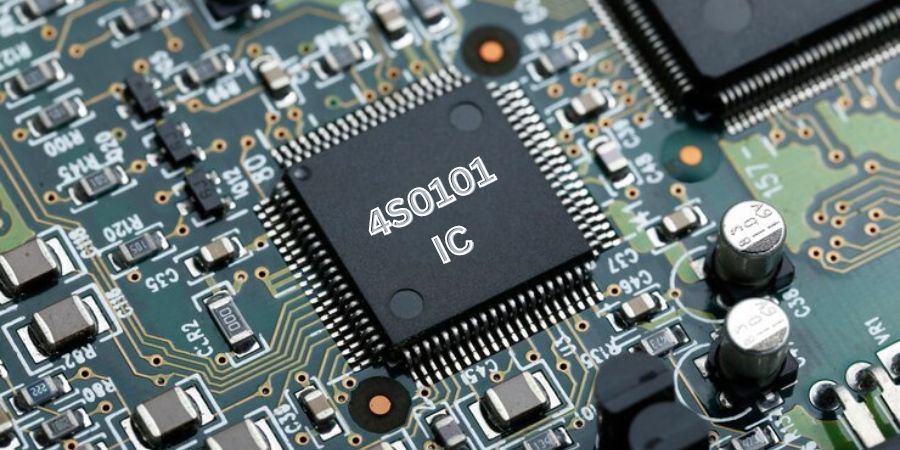Mastering the 4S0101 IC: Essential Tips for Optimal Integration
4S0101 IC is a versatile and essential component in modern electronics, known for its reliability and high performance. Whether you’re designing a new circuit or troubleshooting an existing one, understanding the nuances of the 4S0101 IC can significantly impact the success of your project. This integrated circuit excels in applications ranging from signal processing to data conversion, making it a popular choice for both hobbyists and professionals. In this guide, we will explore how to effectively select, install, and utilize the 4S0101 IC, ensuring it meets your project’s specific needs and operates flawlessly. Let’s dive into the key aspects of working with this indispensable component.
What is the 4S0101 IC?
The 4S0101 IC is a multifunctional integrated circuit commonly used in various electronic devices and systems for data processing, signal amplification, and control functions. It operates efficiently within a broad range of applications, including consumer electronics, communication systems, and industrial automation, ICs like the 4S0101 are designed to replace multiple components, combining transistors, capacitors, resistors, and diodes into a single package. This reduces complexity, increases efficiency, and improves the overall reliability of the system.
Importance of Integrated Circuits in Electronics
Integrated circuits have become the backbone of modern electronics. In the past, engineers relied on bulky vacuum tubes and individual transistors to build circuits. With the advent of ICs, it became possible to compress thousands—or even millions—of transistors into a tiny silicon chip. This led to devices becoming smaller, faster, and more efficient, The 4S0101 IC, like many other ICs, simplifies electronic designs and reduces the physical space required for circuits. This has enabled engineers to create compact yet powerful devices like smartphones, laptops, and automation systems, all of which depend heavily on integrated circuits.
Role of the 4S0101 IC in Modern Electronics
The 4S0101 IC plays a critical role in modern electronics, enabling sophisticated signal processing, data conversion, and control functionalities. It is commonly found in systems that require high-speed processing and real-time data transmission. From smartphones and smart home systems to industrial robots, the 4S0101 IC is integrated into numerous applications where performance and reliability are key, The IC’s ability to manage complex signals and perform rapid computations makes it indispensable in industries like telecommunications, where data transfer speed and signal integrity are vital.
Technical Specifications of the 4S0101 IC
The 4S0101 IC boasts several impressive features that make it an ideal choice for diverse applications:
High-Speed Signal Processing: This IC is designed for high-speed operations, ensuring minimal delays in data handling.
Low Power Consumption: It operates efficiently, consuming minimal power, which is ideal for battery-operated devices.
Support for Both Analog and Digital Signals: The 4S0101 IC can process both types of signals, enhancing its versatility.
Wide Operating Voltage Range: It operates reliably within a wide range of voltages, making it compatible with various power supplies.
Pin Configuration and Layout
Understanding the pin configuration of the 4S0101 IC is crucial for its proper implementation. The IC typically comes in a standard layout, with input/output pins for power, ground, and signal channels. Proper identification and connection of these pins are vital to ensure that the IC performs as expected, For example, specific pins might be dedicated to data input, output, or power supply. Referencing the datasheet of the 4S0101 IC is essential to avoid incorrect pin connections, which could damage the IC or the entire system.
Electrical Characteristics
The electrical characteristics of the 4S0101 IC are key to understanding its performance under different conditions. This IC operates within a specified voltage range, typically between 3V and 5.5V, and is designed to handle different electrical loads while maintaining consistent performance, Additionally, the IC is engineered to have low power consumption, making it suitable for applications where energy efficiency is a priority, such as in portable or battery-operated devices.
Operating Conditions
The operating conditions of the 4S0101 IC are critical to its performance and longevity. It’s designed to work within a specific range of environmental factors, such as temperature and humidity. Operating the IC outside its recommended temperature limits can lead to performance issues or permanent damage. Ensuring proper ventilation and cooling in your system can help maintain these conditions. Additionally, stable voltage supply and protection from excessive moisture are necessary to keep the IC functioning reliably over time.
Applications of the 4S0101 IC
The versatility of the 4S0101 IC allows it to be used in a variety of industries. Some of the most common applications include:
Use in Communication Systems: One of the most prevalent uses of the 4S0101 IC is in communication systems. In such systems, the IC handles tasks like signal amplification, data conversion, and noise reduction. Whether it’s in mobile phones, modems, or internet routers, the 4S0101 IC plays a pivotal role in maintaining strong and clear signals, ensuring seamless communication between devices.
Application in Consumer Electronics: In the realm of consumer electronics, the 4S0101 IC is widely used in devices such as smartphones, tablets, televisions, and audio systems. Its efficient power consumption and high-speed processing make it a perfect choice for portable and power-sensitive gadgets.
Role in Industrial Automation: Industrial automation relies heavily on ICs like the 4S0101 to control machinery, sensors, and actuators. In such systems, the IC processes signals from various sensors, enabling real-time decision-making and control of industrial equipment. This helps increase productivity, ensure safety, and minimize the need for human intervention.
Choosing the Right 4S0101 IC for Your Project
Choosing the right 4S0101 IC for your project requires careful consideration of factors such as signal type, voltage requirements, and processing speed. It’s essential to ensure that the IC is compatible with your system’s power supply and operates within the required voltage range. Additionally, you need to evaluate the IC’s ability to handle the data processing demands of your application, especially in real-time systems. Compatibility with other components like microcontrollers and sensors is also crucial to avoid malfunctions. By considering these aspects, you can ensure optimal performance and reliability in your design.
Compatibility with Other Components
Compatibility with other components is crucial when integrating the 4S0101 IC into your project. Ensuring that the IC works seamlessly with microcontrollers, sensors, and power supplies helps avoid potential malfunctions, such as signal interference or performance issues. Mismatches between components can lead to unreliable operation or even damage to the circuit. To ensure smooth functionality, it’s important to check the electrical and communication standards of all connected parts. Properly matching the IC with other components guarantees efficient performance and long-term reliability.
Voltage and Power Requirements
When selecting the 4S0101 IC, understanding its voltage and power requirements is essential for proper functionality. The IC typically operates within a specific voltage range, such as 3V to 5.5V, and exceeding this range can lead to malfunction or permanent damage. Ensuring that your power supply provides a stable and appropriate voltage is crucial for reliable performance. Additionally, the IC’s power consumption should be considered, especially in battery-operated or energy-sensitive systems, to maintain efficiency and prevent overheating. Meeting these requirements ensures optimal and safe operation.
Installing the 4S0101 IC in Your Circuit
Installing the 4S0101 IC in your circuit requires precise handling to ensure proper functionality. Begin by carefully identifying and connecting the IC’s pins according to the datasheet, as incorrect connections can lead to circuit failure. Use appropriate soldering techniques to secure the IC to the circuit board, avoiding excessive heat that could damage the component. After installation, check for any soldering issues and verify that all connections are stable. Proper installation is crucial for the IC to operate correctly and contribute to the overall performance of your electronic system.
Testing the 4S0101 IC After Installation
After installing the 4S0101 IC in your circuit, thorough testing is essential to ensure it operates as expected. Use a multimeter to check the voltage levels at various pins, confirming that they align with the IC’s specifications. Additionally, perform functional tests to verify that the IC correctly processes signals and performs its designated tasks. Testing helps identify any installation errors or issues with the component itself, allowing for adjustments before the circuit is fully integrated into your project.
Troubleshooting Common Issues with the 4S0101 IC
Like any electronic component, the 4S0101 IC can encounter issues during operation. Here are some common problems and how to resolve them:
Overheating Problems: If the 4S0101 IC becomes too hot during operation, it could be due to excessive voltage, improper power supply, or inadequate heat dissipation. Check the voltage levels and ensure proper cooling mechanisms, such as heat sinks, are in place.
Voltage Irregularities: Fluctuations in voltage can lead to erratic performance. Ensure that your power supply is stable and provides a consistent voltage within the IC’s specified operating range. Voltage regulators may be needed in some cases.
Signal Distortion: Signal distortion in communication or data systems is a common issue. This can be caused by improper grounding, interference from other components, or poor-quality connections. Checking these factors and ensuring proper shielding of signal lines can help mitigate distortion.
Conclusion
The 4S0101 IC is a powerful, versatile, and reliable integrated circuit that is vital in various electronic systems. Understanding its specifications, applications, and troubleshooting techniques will help you make the most of this component in your projects. Whether you’re working on a consumer electronic device, a communication system, or an industrial automation project, the 4S0101 IC is likely to enhance the performance and efficiency of your design.
Share this content:














Post Comment